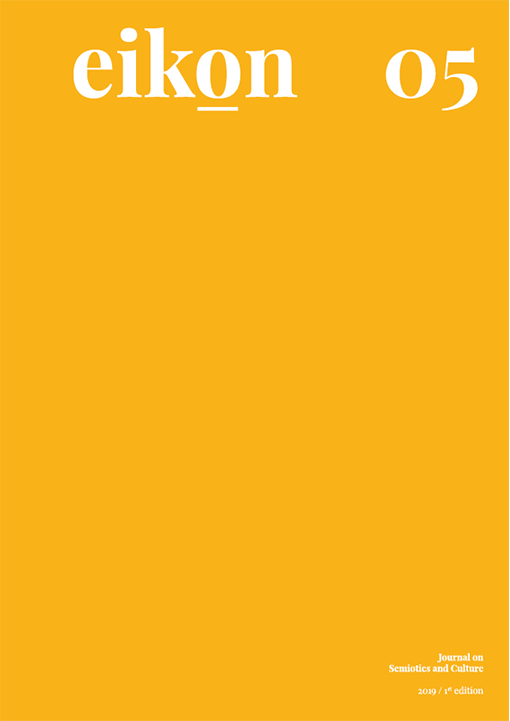Engaging communication: organizational strategies based on the construction of narratives
Palabras clave:
Organizational communication, Narrative, Narratology, Engagement, FondationResumen
This article examines the role of organizational narratives in promoting engagement. The hermeneutic perspective (Ricouer, 1983; 1986) is put in place by aiming at understanding the organizational narratives, its capacity for argumentation and mobilization for action. Seeking to answer the proposed problematic, we have mobilized various studies, notably narratology (Todorov, 1969, Bremond, 1973, Adam, 1985), the narrative perspective of organizations (D’Almeida, 2001), the theory of the text (Barthes, 1974), the theory of action (Parsons, 1978) and the theory of speech acts (Austin, 1962, Searle, 1969). The investigation is focused on the argumentative function and the mobilizing capacity of the narratives focused on the study of platelets produced and disseminated by the Cité Internationale Universitaire de Paris Foundation (CIUP) in order to observe the promotion of the commitment entailed by the construction of stories aimed at patron support.
Citas
Adam, J.-M. (1985). Le texte narratif. Nathan.
Adam, J.-M. (1996). Le récit. Paris : PUF.
Austin, J. L. (1965). How to do Things with words. New York: Oxford University Press.
Barthes, R. (1974), Théorie du texte. En ligne: http://asl.univ-montp3.fr/e41slym/Barthes_THEORIE_DU_TEXTE.pdf. Consulté le 19 février 2012.
Bernard, F. (2007). Communication engageante, environnement et écocitoyenneté : un exemple des « migrations conceptuelles » entre SIC et psychologie sociale . Communication et organisation, 31, 27-41.
Bernard, F. & Joule, R.V. (2005). Le pluralisme méthodologique en Sciences de la Information et de la Communication à l’épreuve de la « communication engageante ». Questions de communication, 7, 185-207.
Charaudeau, P. (1997). Le discours d’information médiatique. La construction du miroir social. Paris : Nathan.
Czarniawska, B. (1998), A narrative approach to organization studies. Thousand Oaks, CA: Sage.
D’Almeida N. (2001). Les promesses de la communication. Paris: PUF.
D’Almeida N. (2004). Les organisations entre récits et médias. Canadian Journal of Communication, 29(1), 25-46.
D’Almeida, N. (2006). La perspective narratologique en organisations. In : Responsabilité sociale : vers une nouvelle communication des entreprises ? Lille : Ed. du Septentrion.
Foucault, M. (1969). L’archéologie du savoir. Paris : Gallimard.
Giroux, N. & Marroquin, L. (2005). L’approche narrative des organisations. Revue Française de Gestion, 6(159), 15-42.
Greimas, A. J. (1966). Éléments pour une théorie de l'interprétation du récit mythique. In: Communications, 8, 28-59.
Joule, R. V. & Beauvois, J. L. (1998). La soumission librement consentie. Paris, PUF.
Lyotard, J.-F. (1979). La condition postmoderne. Paris: Minuit.
Parsons, T. (1937). The Structure of Social Action. New York: McGraw-Hill.
Parsons, T. (1978). Action Theory and the Human Condition. New York: Free Press.
Propp, V. (1928). Morphologie du conte. Paris: Ed. Seuil [1970].
Ricœur, P. (1983). Temps et récit I : L’intrigue et le récit historique. Paris : Seuil.
Ricoeur, P. (1986). Du texte à l’action. Paris: Ed. du Seuil.
Ricoeur, P. (1990). Soi-même comme un autre. Paris: Seuil.
Santos, L. C. (2012). Le récit organisationnel et la promotion de l’engagement. Mémoire (Master Recherche). CELSA, Université Paris-Sorbonne, Paris, 115p.
Searle, J. R. (1969). Speech acts. Cambridge: Cambridge University Press.
Searle, J. R. (1979). Expression and meaning. Cambridge: Cambridge University Press.
Todorov, T. (1968). La grammaire du récit. Langages, 12, 94-102.
White, H. (1987). The content of the form: narrative discourse and historical representation. Baltimore: Johns Hopkins.
Wright, G. H. (1963). Norm and action: a logical enquiry. London: Routledge & Kegan Paul.
Descargas
Publicado
Número
Sección
Licencia
Autores que publicam nesta revista concordam com os seguintes termos:
- Autores conservam os direitos de autor e concedem à revista o direito de primeira publicação, com o trabalho simultaneamente licenciado sob a Licença Creative Commons Attribution que permite a partilha do trabalho com reconhecimento da autoria e publicação inicial nesta revista.
- Autores têm autorização para assumir contratos adicionais separadamente, para distribuição não-exclusiva da versão do trabalho publicada nesta revista (ex.: publicar em repositório institucional ou como capítulo de livro), com reconhecimento de autoria e publicação inicial nesta revista.
- Autores têm permissão e são estimulados a publicar e distribuir o seu trabalho online (ex.: em repositórios institucionais ou na sua página pessoal) a qualquer ponto antes ou durante o processo editorial, já que isso pode gerar alterações produtivas, bem como aumentar o impacto e a citação do trabalho publicado (Veja O Efeito do Acesso Livre).

